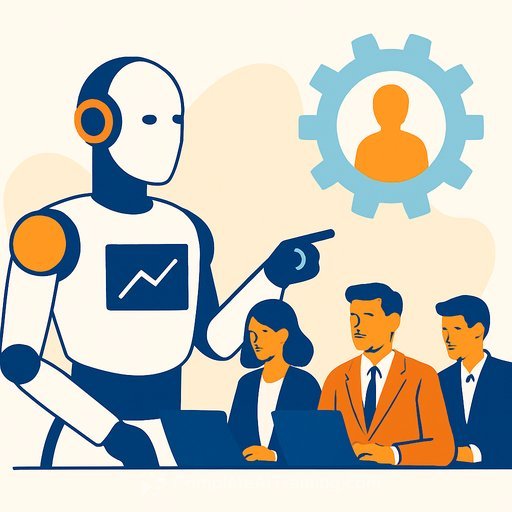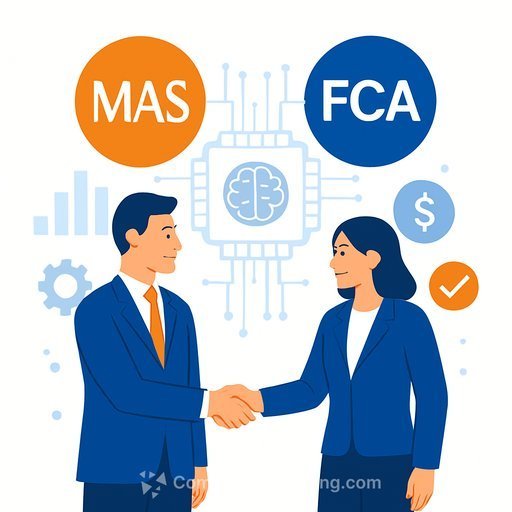Change management for digitisation and agentic AI: Lessons from Met Group's Thomas Bodé
Technology is the easy part. As Thomas Bodé, chief digital transformation officer at Met Group, puts it: swapping an old car for a new one rarely meets resistance. The real work is changing how people think and operate. That is where transformation lives or dies.
Context: a fast-growing energy business with rising complexity
Met Group, headquartered in Switzerland, operates across natural gas, power trading and sales, and energy infrastructure. Since 2022, Bodé has led its digitisation strategy with a clear aim: reduce risk, increase efficiency and scale without bloating costs. As the business expands, so does complexity. Without an enterprise architecture that can flex and scale, agility stalls and risk climbs.
Bodé pushes leadership to factor "intangible liability" from complexity into strategic decisions. Every new process, data source or app adds drag if it is not built into a coherent architecture. The cost shows up later as slow decisions, brittle workflows and duplicated effort.
Start with people, then define data
Earlier in his career at Swarovski, Bodé saw how a long supply chain broke down because teams did not speak the same language about products and customers. Data flowed, but meanings did not. You cannot connect processes or systems if people don't share definitions.
The lesson: connect people first, then define the data. Create a common vocabulary before you automate. That is the foundation of any transformation that aims to scale safely.
BI sprawl: when more data means worse decisions
Met Group scaled business intelligence quickly and ended up with about 10,000 reports. One platform, many versions of the truth. Without organisation and rationalisation, people cannot find what matters, for their role, at the right time.
Metadata quality and architecture are the leverage points. Even with a single source of truth, changing habits takes years. Standardised apps help, but adoption relies on behavior, incentives and clear ownership.
Agentic AI needs two things: strong metadata and structured change
Agentic AI makes decisions with minimal human input through AI agents connected by a metadata layer. It only works if people know where to delegate and where to stay in the loop. That requires explicit decision rights, risk thresholds and accountability.
The tech is attractive, but the handoff between human and AI is the hard part. Treat it as an operating model change, not a feature rollout.
A pragmatic playbook for managers
- Define architecture guardrails: event flows, data domains, integration patterns and security by design. Keep the platform lean.
- Create a business glossary: shared definitions for products, customers, trades, risk metrics and KPIs. One language across teams.
- Catalog and rationalise reports: tag owners, purpose and data sources. Deprecate duplicates on a fixed cadence.
- Invest in metadata: lineage, quality scores, access policies and data contracts. No agentic workflows without this layer.
- Map decisions before automation: what decision, who owns it, what data, what risk band, what SLA. Then pick the right agent.
- Pilot AI in low-risk, high-volume workflows: reconciliations, report distribution, alert triage, data validation. Measure outcomes, not activity.
- Make change management non-negotiable: role-based training, coaching, incentives tied to new ways of working and clear change champions.
- Build guardrails for AI: model monitoring, incident response, bias checks and human override criteria. Align with the NIST AI Risk Management Framework.
- Track business outcomes: decision latency, error rates, cost-to-serve, risk exposure and opportunity cycle time.
How to start, this quarter
Pick one business-critical decision with high repetition and measurable risk. Standardise its data definitions, clean the metadata and consolidate the reports that feed it. Set decision rights and escalation thresholds.
Run a 90-day pilot with one AI agent, one team and one clear KPI. Publish the results. Use that proof to scale into adjacent decisions without adding unnecessary tools or new layers of complexity.
The real takeaway
Technology will get people excited. Sustainable gains come from aligning people, process, data and architecture-then layering AI on top. As Bodé shows, digitisation succeeds when you treat complexity as a cost, metadata as a product and change management as the main event.
If you're upgrading team capability for these shifts, explore role-based programmes here: AI courses by job role.
Your membership also unlocks:






